#vishnudharmottara
Photo
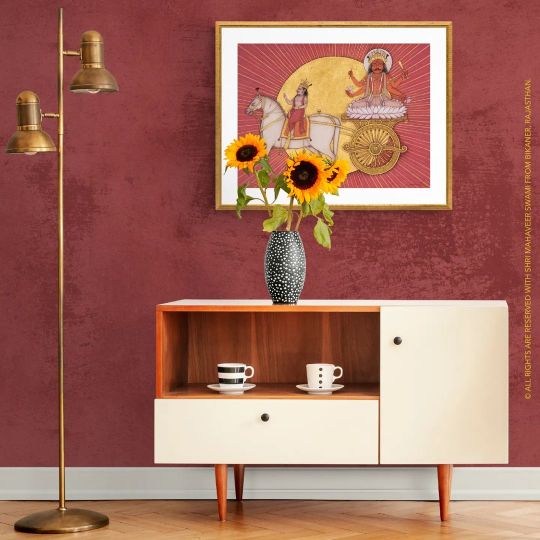
🌞🌞🌞 मकरसङ्क्रान्ति - Makarasaṅkrānti, a festival to celebrate the Sun (Sūrya), this significance of #surya is traceable to the #vedictexts, particularly the #gayatrimantra, a sacred hymn of #hinduism found in its scripture named the #rigveda. According to #vishnudharmottara, the iconography of #lordsun should be shown with four hands, with flowers in two hands, a staff in third, and in fourth he should be shown to be holding writing equipment (symbolizing knowledge). He is resplendently seated or standing on a chariot pulled by one or more horses, typically seven. His chariot driver is stated to be Aruṇa who is seated. 🌞🌞🌞 Shri Mahaveer Swami's (@artistmahaveerswami) graceful #artwork “Sūrya” is a combination of his #innervision and finely tuned technique. DM for further query/ies on #originalartwork and its #fineartprint. PS: The artwork was illustrated in the last #bikanerpaintingworkshop with @me_meraki. 🌞🌞🌞 #makarsankranti #makarrashi #makar #capricorn #sankranti #solarcycle #lunarcycle #lunarcalendar #thesun #aruna #surya #uttarayan #lohri #bhogalibihu #ganga #yamuna #festivalsofindia #kitefestival (at Mahaveer Swami Shilpshala) https://www.instagram.com/p/CnXS9MsSvMs/?igshid=NGJjMDIxMWI=
#surya#vedictexts#gayatrimantra#hinduism#rigveda#vishnudharmottara#lordsun#artwork#innervision#originalartwork#fineartprint#bikanerpaintingworkshop#makarsankranti#makarrashi#makar#capricorn#sankranti#solarcycle#lunarcycle#lunarcalendar#thesun#aruna#uttarayan#lohri#bhogalibihu#ganga#yamuna#festivalsofindia#kitefestival
0 notes
Text
16 Quiz Answer about Goddess Chamunda
1. **What is Chamunda’s symbolic representation according to the Vishnudharmottara Purana?**
– *Answer: Chaturvaja, possessing trinetra (three eyes), adorned with a garland, seated in padmasana.*
2. **Describe Chamunda’s physical attributes and accessories based on certain instances.**
– *Answer:
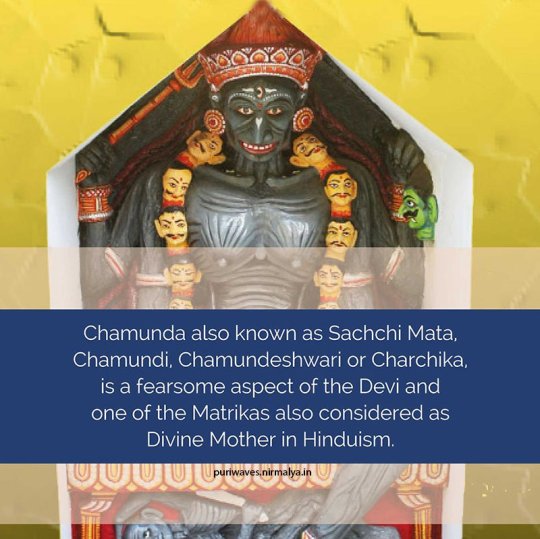
View On WordPress
2 notes
·
View notes
Text
Unveiling the Splendor of Ancient Indian Clothing and Style
India's rich history is adorned with a tapestry of clothing and fashion that has evolved over the centuries. From the Vedic times to the Indus Valley civilization, the clothing of ancient India tells a captivating story of tradition, culture, and artistry. In this blog post, we dive into the remarkable world of ancient Indian clothing, exploring the styles, fabrics, and colors that adorned both men and women. Let's embark on a journey back in time to discover the fascinating attire that shaped the fashion landscape of ancient India.

Clothing and Style for Men:
Dhoti: A cloth wrapped around the waist and knotted at the back.

Antariya: A white cotton or muslin cloth tied to the waist, accompanied by a sash called Kayabandh and a scarf called Uttariya.

Turban: A cloth wrapped around the head, often symbolizing social status and identity.

Phetas: Special turbans worn for religious purposes.
There are numerous types of phetas which are being used in different places across India for different purposes.
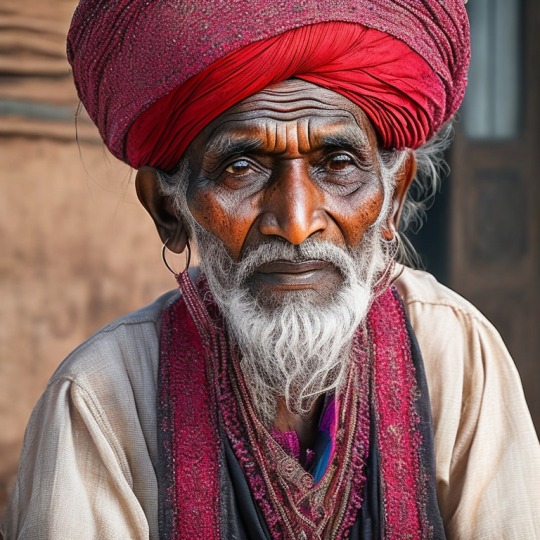
Peplon or chiton: Layered clothing made of linen and wool, adjusted according to weather conditions.

Man-buns and short or shaved beards were popular styles

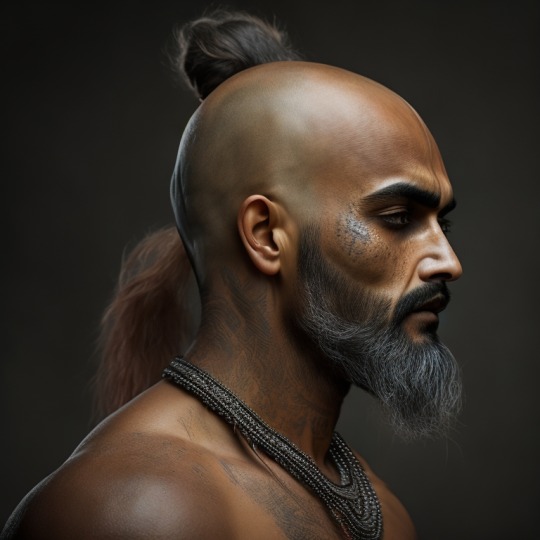
Clothing and Style for Women:
- Sari: A long piece of cloth draped around the body and over the head, showcasing elegance and grace
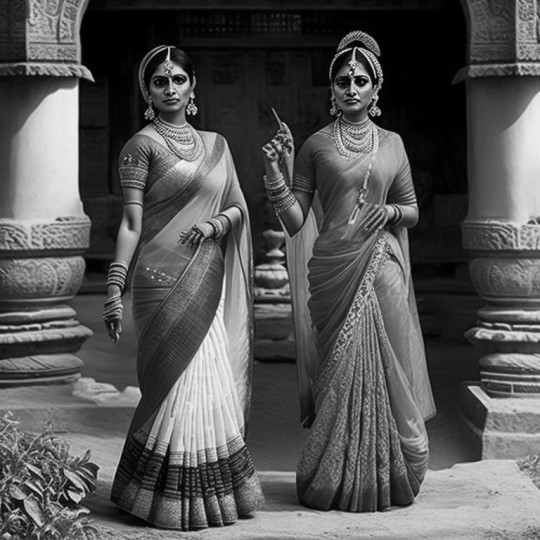
Knee-length skirts paired with intricate jewelry like bangles, earrings, and beaded necklaces.
- Elaborate jewelry made of stones, animal claws, feathers, and shells.
- Handloom textiles woven by skilled artisans.

- Gold ornaments, particularly worn by upper castes.
Sirradai: A short lower garment made of handspun cotton and silk.

Traditional Colors Used in Ancient Indian Clothing:
Ancient Indians were adept at dyeing clothes, and specific colors held symbolic significance:
- Ivory, jasmine, August moon, August clouds after the monsoon, and the color of the peacock's neck were significant traditional colors.
- The Vedic treatise Vishnudharmottara described these hues.
Traditional clothing of india
Men wore a variety of garments depending on their region, occupation, and social status. Some common examples include:
Lungi: A simple garment made of a single piece of cloth wrapped around the waist and legs, similar to a sarong.

Veshti: A long piece of cloth wrapped around the waist and legs, similar to a dhoti but without the pleats.

Angrakha: A long tunic with a V-shaped neckline that is worn over a dhoti or other lower garment.
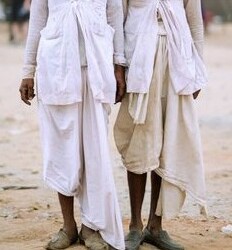
Sherwani: A long coat-like garment that was often worn for formal occasions.


Pajama: Loose-fitting pants that are typically worn with a kurta or other upper garment.
It's worth noting that the styles and materials of these garments varied widely depending on the time period and region in which they were worn.
Conclusion:
Ancient Indian clothing showcased the richness of culture, history, and artistry. Through the ages, men and women draped themselves in garments like dhotis, saris, turbans, and knee-length skirts, reflecting their customs, traditions, and social status. Warriors donned armor and wielded weapons as they protected their kingdoms. The vibrant colors derived from natural elements added splendor to the attire. The remnants of ancient Indian clothing, discovered through sculptures, paintings, and literature, provide us with a glimpse into the past, where clothing was not merely functional but also an expression of identity and heritage.
#beautyofindia #indianclothing #indianimpact #indianhertage#forgottenbharat
3 notes
·
View notes
Text
Vishnudharmottara Mahapuranam विष्णुधर्मोत्तरमहापुराणम् - Vedrishi
Buy Vishnudharmottara Mahapuranam( 3 vol.) विष्णुधर्मोत्तरमहापुराणम् in 4,300.00 | Author : Shri Kapildev Narayan(श्री कपिलदेव नारायण) - Hindi Book at lowest online price
https://vedrishi.com/book/vishnudharmottara-mahapuranam-3-vol/

0 notes
Text
Odia Book Bruhat Shilpashastra By Jyotrbid Pandit Sidhanti
This book is about Bastu Shastra of house development what's more, land puja. A superb book that assists you with learning and apply the well known Indian Vastu Shastra for your home development, Ofiice Development. Very obviously specifies the Puja that should be finished for your home to be Vastu the start of the book, it specifies various petitions
for Master Ganesha, Vastu Purusha , Ruler Brahma, etc .In some of sections it makes reference to how to know the Shade of land, dispose of wrongs on the off chance that present in your property and furthermore how to snactify your land.The magnificence of the book is that, it plainly makes reference to the best Headings for Principal entry of the entryway, various rooms of house , length of house and land proportion.
Shilpa Shastras remember sections for compositions, both smaller than usual and large.For model, Narada Shilpa Shastra devotes parts 66 and 71 to painting, while Saraswati Shilpa Shastra depicts different kinds of chitra full artwork, ardhachitra sketch work, chitrabhasa correspondence through painting, varna samskara planning of varieties.
Other antiquated Shilpa Shastra on painting incorporate Vishnudharmottara Purana and Chitralakshana, the previous is accessible in Sanskrit while the main enduring duplicates of the last option are in Tibetan both were initially composed on birch bark, and have been converted into English and German). These Sanskrit compositions examine the accompanying parts of a canvas: estimation, extents, viewpoint of the watcher, mudra, feelings, and rasa meaning. Such a way to deal with Indian compositions, states Isabella Nardi, make Shilpa Shastra sanctioned literary sources as well as a way to send information and profound subjects.
0 notes
Photo
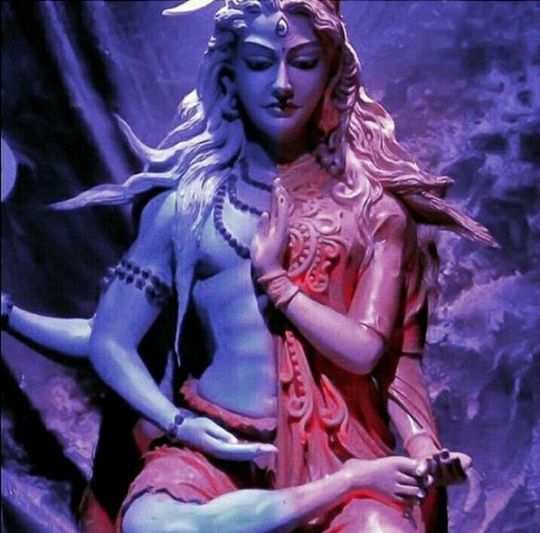





Ardhanarishvara
Ardhanarishvara is the divine union between Shiva and his consort Parvati, together they make a whole, unified androgynous being. This is the form Shiva took in the beginning of creation and gave divine inspiration to Brahma for a different kind of being that would help his own creatures procreate. she is the other half of Shiva, thus this form is an undeniable part of him.
In this form, Shiva clearly bends the gender binary, and shows that true unity is found within the balance of the divine masculine and feminine within.
“Ardhanarishvara represents the synthesis of masculine and feminine energies of the universe (Purusha and Prakriti) and illustrates how Shakti, the female principle of God, is inseparable from (or the same as, according to some interpretations) Shiva, the male principle of God, and vice versa. The union of these principles is exalted as the root and womb of all creation. Another view is that Ardhanarishvara is a symbol of Shiva's all-pervasive nature...
Ardhanarishvara symbolizes that the male and female principles are inseparable.[32] The composite form conveys the unity of opposites (coniunctio oppositorum) in the universe.[3][12][55][56] The male half of Ardhanarishvara stands for Purusha and female half is Prakriti. Purusha is the male principle and passive force of the universe, while Prakriti is the female active force; both are "constantly drawn to embrace and fuse with each other, though... separated by the intervening axis". The union of Purusha (Shiva) and Prikriti (Shiva's energy, Shakti) generates the universe, an idea also manifested in the union of the Linga of Shiva and Yoni of Devi creating the cosmos.[57][58][59] The Mahabharata lauds this form as the source of creation.[46] Ardhanarishvara also suggests the element of Kama or Lust, which leads to creation.[59]
Ardhanarishvara signifies "totality that lies beyond duality", "bi-unity of male and female in God" and "the bisexuality and therefore the non-duality" of the Supreme Being.[20][60] It conveys that God is both Shiva and Parvati, "both male and female, both father and mother, both aloof and active, both fearsome and gentle, both destructive and constructive" and unifies all other dichotomies of the universe.[55] While Shiva's rosary in the Ardhanarishvara iconography associates him with asceticism and spirituality, Parvati's mirror associates her to the material illusory world.[61] Ardhanarishvara reconciles and harmonizes the two conflicting ways of life: the spiritual way of the ascetic as represented by Shiva, and the materialistic way of the householder as symbolized by Parvati, who invites the ascetic Shiva into marriage and the wider circle of worldly affairs. The interdependence of Shiva on his power (Shakti) as embodied in Parvati is also manifested in this form.[55] Ardhanarishvara conveys that Shiva and Shakti are one and the same, an interpretation also declared in inscriptions found along with Ardhanarishvara images in Java and the eastern Malay Archipelago.[3][9] The Vishnudharmottara Purana also emphasizes the identity and sameness of the male Purusha and female Prakriti, manifested in the image of Ardhanarishvara.[62] According to Shaiva guru Sivaya Subramuniyaswami (1927–2001), Ardhanarishvara signifies that the great Shiva is "All, inseparable from His energy" (i.e. his Shakti) and is beyond gender.[63]
Across cultures, hermaphrodite figures like Ardhanarishvara have traditionally been associated with fertility and abundant growth. In this form, Shiva in his eternal embrace with Prakriti represents the eternal reproductive power of Nature, whom he regenerates after she loses her fertility. "It is a duality in unity, the underlying principle being a sexual dualism".[58] Art historian Sivaramamurti calls it "a unique connection of the closely knit ideal of man and woman rising above the craving of the flesh and serving as a symbol of hospitality and parenthood".[20] The dual unity of Ardhanarishvara is considered "a model of conjugal inseparability". Padma Upadhyaya comments, "The idea of ... Ardhanārīśvara is to locate the man in the woman as also the woman in the man and to create perfect homogeneity in domestic affairs".[19]
Often, the right half of Ardhanarishvara is male and the left is female. The left side is the location of the heart and is associated with feminine characteristics like intuition and creativity, while the right is associated with the brain and masculine traits – logic, valour and systematic thought.[12][64] The female is often not equal in the Ardhanarishvara, the male god who is half female; she remains a dependent entity.[65] Ardhanarishvara "is in essence Shiva, not Parvati". This is also reflected in mythology, where Parvati becomes a part of Shiva. It is likewise reflected in iconography: Shiva often has two supernatural arms and Parvati has just one earthly arm, and his bull vahana – not her lion vahana – typically accompanies them.[66] “
[-https://en.wikipedia.org/wiki/Ardhanarishvara]
“Ardhanarishvara is an androgynous form of Lord Shiva, the composite of Shiva and Parvati, the half-male and half-female fusion from the center. The right half is that of Shiva, and the left half expounds Parvati. Symbolizing the all-pervasive, all-enduring nature of Lord Shiva, Ardhanarishwar portrays a perfect balance of male and female as equal, as “Purusha” and “Prakriti,” the feminine and masculine energies of the cosmos as well as Shiva, the male principle of God, as the essence of Shakti, the Sacred Feminine.“
[-https://vedicfeed.com/ardhanarishvara-shiva-shakti/]
“Ardhanarishvara is a composite androgynous form of Shiva and his consort Parvati. This form is shown as a fusion of half-male and half-female forms, split down in the center. The right half is depicted as Shiva, while the left half shows the female form of Parvati.
The very name Ardhanarishvara implies "the Lord who is half-woman". This form of Shiva is also referred to as Ardhanarisha, Ardhanarinateshwara, Ardhayuvateeshwara, Ardhagaureeshwara, Gaureeshwara, Naranaari, Parangada and Ammiappan.
Since Ardhanarishvara represents the perfect synthesis of male and female forms, it also embodies the Prakriti and the Purusha, the feminine and masculine energies of the cosmos and also illustrates how Shakti, the Sacred Feminine, is inseparable from Shiva, the male principle of God. This form also symbolizes the all-pervasive, all-enduring nature of Lord Shiva.“
-[https://www.dollsofindia.com/library/ardhanarishvara-symbolism/]
“According to the philosophy of Tantra, the entire universe is a manifestation of pure consciousness. In manifesting the universe, this pure consciousness seems to become divided into two poles or aspects, neither of which can exist without the other. Each requires the other in order to manifest its total nature.One aspect, Shiva, is masculine, retains a static quality and remains identified with unmanifested consciousness. Shiva has the power to be but not the power to become or change.The other aspect, Shakti, is feminine, dynamic, energetic and creative. Shakti is the Great Mother of the universe, for it is from her that all form is born.According to Tantra, the human being is a miniature universe. All that is found in the cosmos can be found within each individual, and the same principles that apply to the universe apply in the case of the individual being.In human beings, Shakti, the feminine aspect is called Kundalini. This potential energy is said to rest at the base of the spinal cord. The object of the Tantric practice of Kundalini-yoga is to awaken this cosmic energy and make it ascend through the psychic centers, the chakras, that lie along the axis of the spine as consciousness potentials. She will then unite above the crown of the head with Shiva the pure consciousness. This union is the aim of Kundalini-yoga: a resolution of duality into unity again, a fusion with the Absolute. By this union the adept attains liberation while living which is considered in Indian life to be the highest experience: an union of the individual with the universe. Once Kundalini Shakti has ascended to above the crown of the head and merged with Shiva, it is made to reverse its course and return to rest at the base of the spine.In Tantrism the state of ultimate bliss is a transcendence of dualities male-female, energy-consciousness, Shiva-Shakti…“
[-https://www.tantra-kundalini.com]
“Ajna chakra is the location of the third eye which is the conscience. The two physical eyes see the past and the present, while the third eye reveals the insight of the future. The seed syllable is Aum, or “Pranava Om”, the supreme sound. When one establishes himself in the place between the eyebrows he goes beyond all the kinds of desires that motivate life and impel one to move in many directions. All experience and ideas serve only to clarify one’s perceptions in Ajna Chakra. The plane of neutrality (Sarasvati) appears as a balance between solar and lunar energy within the body...
The presiding deity is Ardhanarishvara, the half-male, half-female Shiva-Shakti, symbolic of basic polarity; the right side is male and the left side, female. Ardhanarishvara stands in a lingam known as Itara Lingam. The lingam is shining white, like the color of light. The male half of Ardhanarishvara has camphor-blue skin. He holds a trident in his right hand, representing the three aspects of consciousness: cognition, conation, and affection. The female side of Ardhanarishvara is pink. She wears a red sari, and about her neck and arms are wound shining golden ornaments. She holds a pink lotus, a symbol of purity. All duality has ceased. Shiva has total command over all aspects of the self in this plane of liberation, or moksha. The third eye of Shiva is called sva-netra, the organ of clairvoyance. Becoming Sada-Shiva, the eternal one, Shiva is no longer separate from Shakti as a separate male entity. Devata Shiva is the granter of knowledge. This knowledge brings the breath (prana) and the mind under control of Ardhanarishvara.”
[-https://www.tantra-kundalini.com/ajna/]
#ardhanarishvara#shiva#shakti#parvati#hindu gods#hindu mythology#tantra#hinduism#androgyny#genderless#non binary#god is trans#terfs die mad#art#aesthetic#fave#agender#hinduism: the trans cult according to terfs#bc thats essentially what that other terf was saying by denying my spirituality#like im sorry you cant accept the genderlessness and being trans and being non binary is just like a normal part of my religion#im sorry you refuse to be okay with that#perhaps its the christian upbringing.
10 notes
·
View notes
Text
Kinnara
A kinnara is a celestial musician, part human and part bird, who are musically paradigmatic lovers, in Hinduism and Buddhism. In these traditions, the kinnaras (male) and kinnaris (female counterpart) are two of the most beloved mythological characters. Believed to come from the Himalayas, they often watch over the wellbeing of humans in times of trouble or danger. An ancient Indian string instrument is known as the Kinnari vina. Their character is also clarified in the Adi Parva of the Mahabharata, where they say:
We are everlasting lover and beloved. We never separate. We are eternally husband and wife; never do we become mother and father. No offspring is seen in our lap. We are lover and beloved ever-embracing. In between us we do not permit any third creature demanding affection. Our life is a life of perpetual pleasures.
They are featured in a number of Buddhist texts, including the Jataka tales and Lotus Sutra. In Southeast Asian Buddhist mythology, kinnaris, the female counterpart of kinnaras, are depicted as half-bird, half-woman creatures. One of the many creatures that inhabit the mythical Himavanta, kinnaris have the head, torso, and arms of a woman and the wings, tail and feet of a swan. They are renowned for their dance, song and poetry, and are a traditional symbol of feminine beauty, grace and accomplishment.
In the Sanskrit language, the name kinnara contains a question mark i.e. is this man?. In Hindu mythology, kinnara is described as half-man, half-horse, and half-bird. The Vishnudharmottara describes Kinnara as half-man and half-horse, but the correct nature of kinnara as Buddhists understood is half-man and half-bird which is different from the centaur-like Kinnaras of the Hindu mythology. The figure of Yaksha with a horse head illustrated in Bodh Gaya sculptures in however a kinnari as the Jataka illustrating it treats her as a demi-god. According to the Jatakas, kinnaras are fairies and are shown as going in pairs noted for mutual love and devotion. In the Chanda kinnara Jataka the devotion of the Kinnarai to her wounded kinnara husband brings Indra on the scene to cure him from the wound. The kinnaras are noted for their long life.
The Jatakas describe the kinnaras as innocent and harmless, hop like birds, are fond of music and song, and with the female beating a drum and male playing on lute. Such harmless creatures are described in Jataka No.481 as being caught, put into cages, and thus presented to kings for their delight. In Jataka No.504, we have the autobiography of a kinnara who describes the kinnara class as human-like the wild things deem us; huntsmen call us goblins still. The kinnaras can sing, play the flute and dance with soft movements of the body. Kalidasa in his Kumara Sambhava describes them as dwelling in the Himalayas. kinnaras lived also over the hills of Pandaraka, Trikutaka, Mallangiri, Candapabbata, and Gandhamandana (Jataka No. 485). They were tender-hearted and Jataka No. 540 refers to the story of the kinnaras nursing a human baby whose parents have gone away to the woods. Yet, we find that they were looked upon as queer animals and were hunted, captured and presented to the kings as entertainment. Flowers formed their dress. Their food was flower pollen and their cosmetics were made of flower perfumes.
The depiction of kinnara in early Indian art is an oft-repeated theme. The ancient sculptures of Sanchi, Barhut, Amaravati, Nagarjunakonda, Mathura, and the paintings of Ajanta depict kinnaras invariably. Frequently, they are seen in the sculptures flanking the stupas. In this case, they hold garlands or trays containing flowers in their hands for the worship of the Stupas. Sometimes, the kinnaras appear in the sculptures holding garland in right hand and tray in the left hand. They also appear before Bodhi-Drumas, Dharmacakras, or playing a musical instrument. As such, the portrayal of kinnaras in early Indian sculpture art is very common.

Pic by daxiong at deviantart
13 notes
·
View notes
Text
Apsaras In Hinduism
Apsaras or divine damsels are an important part Hinduism. Ancient
treatises like Chitrasutra of Vishnudharmottara Purana, Manasollasa,
Aparajita Parichha, Amara Kosha and many such works refer to the various forms
and names of the Apsara.
Apsaras are known by different names like Devangana, Gandharva Kannikas, Salabhanjika, Madanika, etc.
In sculptures in temples Apsaras are represented as…
View On WordPress
0 notes
Photo

The word “mural” derived from the latin word “murus” which means wall. Any piece of artwork painted onto a wall or any solid permanent surface is known as Mural Painting.
The history of Murals starts in early medieval period of 2nd century BC to 10th century AD. Mural art basically sculptured on natural caves or rock cut chambers.
The Canvas of Ajanta, Sittanavasal, Armamalai cave, Ravan Chaaya Rock Shelter, Kailasanatha Temple, Bagh. India has wide range of studies for various artforms like Murals as Manasollasa, Vishnudharmottara, Shilparatna, Silpashastra, Narad-Shilpa-Shastra.
0 notes
Photo

The SUN The iconography of Surya in Hinduism varies with its texts. He is typically shown as a resplendent standing person holding lotus flower in both his hands, riding a chariot pulled by one or more horses typically seven. The seven horses are named after the seven meters of Sanskrit prosody: Gayatri, Brihati, Ushnih, Jagati, Trishtubha, Anushtubha and Pankti. The Brihat Samhita, a Hindu text that describes architecture, iconography and design guidelines, states that Surya should be shown with two hands and wearing a crown. In contrast, the Vishnudharmottara, another Hindu text on architecture, states Surya iconography should show him with four hands, with flowers in two hands, a staff in third, and in fourth he should be shown to be holding writing equipment (Kundi palm leaf and pen symbolizing knowledge). His chariot driver in both books is stated to be Aruṇa who is seated. Two females typically flank him, who represent the dawn goddesses named Usha and Pratyusha. The goddesses are shown to be shooting arrows, a symbolism for their initiative to challenge darkness. The iconography of Surya has also varied over time. In some ancient arts, particularly from the early centuries of the common era, his iconography is like those found in Persia and Greece suggesting likely adoption of Greek, Iranian and Scythian influences. After the Greek and Kushan influences arrived in ancient India, some Surya icons of the period that followed show him wearing a cloak and high boots. In some Buddhist artwork, his chariot is shown as being pulled by four horses. The doors of Buddhist monasteries of Nepal show him, along with the Chandra (moon god), symbolically with Surya depicted as a red circle with rays. Aniconic symbols of Surya include the Swastika and the ring-stone. Courtesy – Wikipedia #Knowgod#RespectNature#Gratitudetowardscreation# #4U4EVERrEDDYsUDARSHAN# https://www.instagram.com/p/CAYP_UbnDDj/?igshid=1995kbih1mg9e
0 notes
Text
Kesa-vinyas or Hairstyles in Indian art- a photo exhibition by the ASI (2015)
Kesa-vinyas or Hairstyles in Indian art- a photo exhibition by the ASI (2015)
My two bits as Introduction
Hair is an important aspect of a person as well as that of an image or a murti. It gives it an individuality and adds to the personality or character of that person or image. The Chitrasutra of Vishnudharmottara purana names six different types of hairstyles: Kuntala (loose flowing hair), Dakshinavarta (hair curled towards the right); Taranga (wavy hair); Simha…
View On WordPress
#ancient#ancientindia#ancientindianart#ancientindianhairstyles#archaeology#art#art history#ASI#buddhism#coiffures#hairstyles#headgears#heritage#hinduism#jainism#musuem
0 notes
Photo

🌞🌞🌞 मकरसङ्क्रान्ति - Makarasaṅkrānti, a festival to celebrate the Sun (Sūrya), this significance of #surya is traceable to the #vedictexts, particularly the #gayatrimantra, a sacred hymn of #hinduism found in its scripture named the #rigveda. According to #vishnudharmottara, the iconography of #lordsun should be shown with four hands, with flowers in two hands, a staff in third, and in fourth he should be shown to be holding writing equipment (symbolizing knowledge). He is resplendently seated or standing on a chariot pulled by one or more horses, typically seven. His chariot driver is stated to be Aruṇa who is seated. 🌞🌞🌞 Shri Mahaveer Swami's (@artistmahaveerswami) graceful #artwork “Sūrya” is a combination of his #innervision and finely tuned technique. DM for further query/ies on #originalartwork and its #fineartprint. PS: The artwork was illustrated in the last #bikanerpaintingworkshop with @me_meraki. 🌞🌞🌞 #makarsankranti #makarrashi #makar #capricorn #sankranti #solarcycle #lunarcycle #lunarcalendar #thesun #aruna #surya #uttarayan #lohri #bhogalibihu #ganga #yamuna #festivalsofindia #kitefestival (at Mahaveer Swami Shilpshala) https://www.instagram.com/p/CnXShCtSNJn/?igshid=NGJjMDIxMWI=
#surya#vedictexts#gayatrimantra#hinduism#rigveda#vishnudharmottara#lordsun#artwork#innervision#originalartwork#fineartprint#bikanerpaintingworkshop#makarsankranti#makarrashi#makar#capricorn#sankranti#solarcycle#lunarcycle#lunarcalendar#thesun#aruna#uttarayan#lohri#bhogalibihu#ganga#yamuna#festivalsofindia#kitefestival
0 notes
Text
Apsaras In Hinduism
Apsaras or divine damsels are an important part Hinduism. Ancient
treatises like Chitrasutra of Vishnudharmottara Purana, Manasollasa,
Aparajita Parichha, Amara Kosha and many such works refer to the various forms
and names of the Apsara.
Apsaras are known by different names like Devangana, Gandharva Kannikas, Salabhanjika, Madanika, etc.
In sculptures in temples Apsaras are represented as…
View On WordPress
0 notes
Text
Apsaras In Hinduism
Apsaras or divine damsels are an important part Hinduism. Ancient
treatises like Chitrasutra of Vishnudharmottara Purana, Manasollasa,
Aparajita Parichha, Amara Kosha and many such works refer to the various forms
and names of the Apsara.
Apsaras are known by different names like Devangana, Gandharva Kannikas, Salabhanjika, Madanika, etc.
In sculptures in temples Apsaras are represented as…
View On WordPress
0 notes
Photo

The SUN The iconography of Surya in Hinduism varies with its texts. He is typically shown as a resplendent standing person holding lotus flower in both his hands, riding a chariot pulled by one or more horses typically seven. The seven horses are named after the seven meters of Sanskrit prosody: Gayatri, Brihati, Ushnih, Jagati, Trishtubha, Anushtubha and Pankti. The Brihat Samhita, a Hindu text that describes architecture, iconography and design guidelines, states that Surya should be shown with two hands and wearing a crown. In contrast, the Vishnudharmottara, another Hindu text on architecture, states Surya iconography should show him with four hands, with flowers in two hands, a staff in third, and in fourth he should be shown to be holding writing equipment (Kundi palm leaf and pen symbolizing knowledge). His chariot driver in both books is stated to be Aruṇa who is seated. Two females typically flank him, who represent the dawn goddesses named Usha and Pratyusha. The goddesses are shown to be shooting arrows, a symbolism for their initiative to challenge darkness. The iconography of Surya has also varied over time. In some ancient arts, particularly from the early centuries of the common era, his iconography is like those found in Persia and Greece suggesting likely adoption of Greek, Iranian and Scythian influences. After the Greek and Kushan influences arrived in ancient India, some Surya icons of the period that followed show him wearing a cloak and high boots. In some Buddhist artwork, his chariot is shown as being pulled by four horses. The doors of Buddhist monasteries of Nepal show him, along with the Chandra (moon god), symbolically with Surya depicted as a red circle with rays. Aniconic symbols of Surya include the Swastika and the ring-stone. Courtesy – Wikipedia #Knowgod#RespectNature#Gratitudetowardscreation# #4U4EVERrEDDYsUDARSHAN# https://www.instagram.com/p/CAYP_UbnDDj/?igshid=fmpmrmmhv2ne
0 notes
Text
Apsaras In Hinduism
Apsaras or divine damsels are an important part Hinduism. Ancient
treatises like Chitrasutra of Vishnudharmottara Purana, Manasollasa,
Aparajita Parichha, Amara Kosha and many such works refer to the various forms
and names of the Apsara.
Apsaras are known by different names like Devangana, Gandharva Kannikas, Salabhanjika, Madanika, etc.
In sculptures in temples Apsaras are represented as…
View On WordPress
0 notes